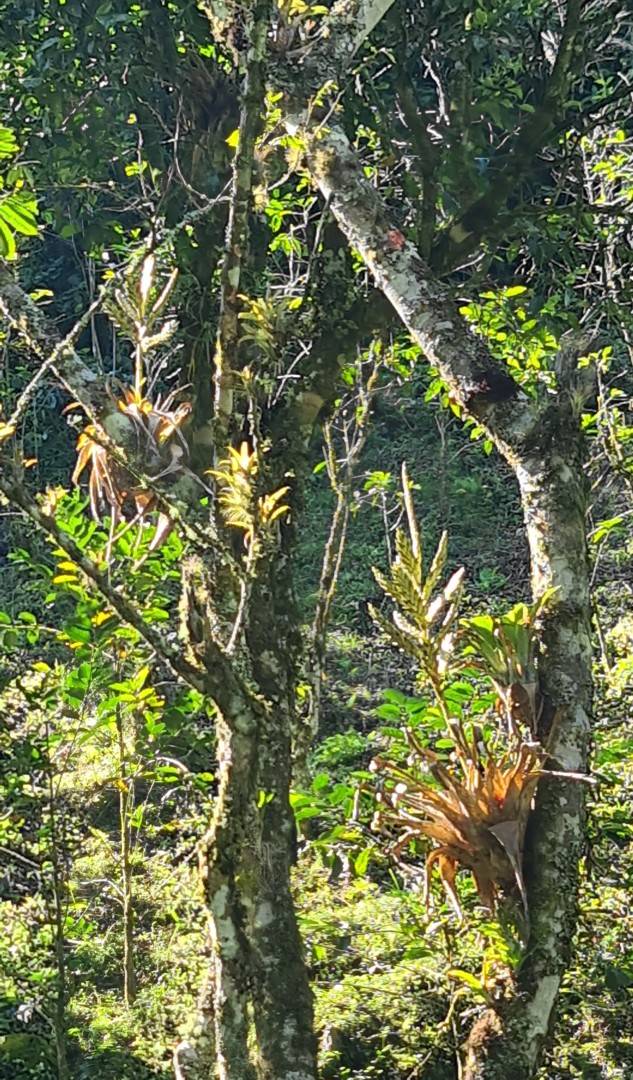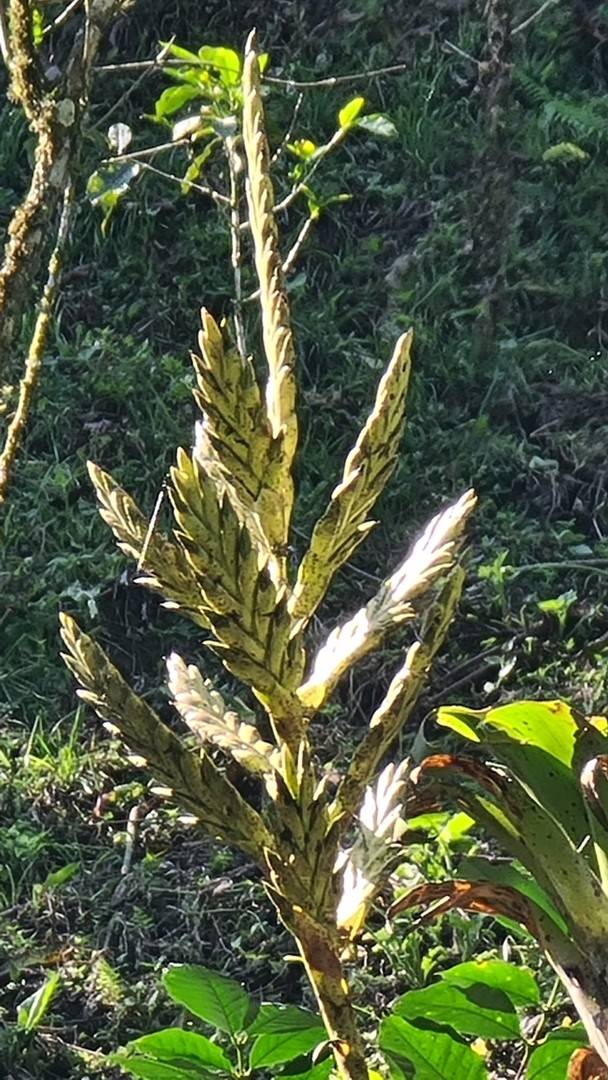Tillandsia lucida
Click thumbnails for full size, scaled to a new window.
Tillandsia lucida



 Barry Langridge ... "We found Tillandsia lucida growing in many varied habitats across large areas of Oaxaca and Chiapas on our recent trip to Mexico, although it is recorded from other States and Countries as well.
Barry Langridge ... "We found Tillandsia lucida growing in many varied habitats across large areas of Oaxaca and Chiapas on our recent trip to Mexico, although it is recorded from other States and Countries as well.
We usually saw T. lucida growing in isolated populations of 1-10 plants, however when we were in remote parts of northern Chiapas, we found this species on mass in local areas.
The recorded flowering season is around July each year, so we were unable to find a plant with the petals out in its usual pink bract form on this trip, but we have many pictures of examples of this plant post floral to ID."
Tillandsia lucida E. Morren ex Baker, Handb. Bromel. 207. 1889.
Desc from S&D p718
Plant stemless, flowering 6 dm to over 1 m high.
Leaves 20-30 in a dense subspreading rosette, 3-4 dm long, punctulate-lepidote throughout;
Sheaths ovate or elliptic, 12 cm long, densely lepidote, dark-violet or brownish-violet inside, pale-green outside, matching the blades;
Blades ligulate, acute, 3 cm wide, sparsely lepidote, dark-green above, chartaceous when dry.
Scape erect or ascending, stout;
Scape-bracts densely imbricate, subfoliaceous with spreading or recurved blades, violet-tinted, subcoriaceous, glabrous, lustrous.
Inflorescence compound, densely digitate or subpinnate, subfusiform, to 3 dm long, of 5-12 spikes, glabrous;
Primary bracts suberect, broadly ovate, acute, much shorter than the axillary branches;
Spikes substrict, sessile, oblong in outline, acute, slightly curved, 1 dm long, 18 mm wide, complanate, densely 8-14-flowered.
Floral bracts erect, densely imbricate, broadly elliptic, obtuse, 35 mm long, exceeding the sepals, subinflated, only the lowest ones at all carinate, coriaceous, lustrous, even or somewhat striate, reddish-green, drying to pale-stramineous;
flowers erect;
pedicels stout, 2 mm long.
Sepals narrowly elliptic, obtuse, 24 mm long, 8 mm wide, membranaceous or chartaceous, prominently nerved, subfree, the posterior carinate;
Petals 6 cm long, tubularerect, pale blue-violet;
Stamens included.
Type. E. Morren Icon (holotype K, "made from a plant flowered by M. Jacob-Makoy & Co. in 1881").
DISTRIBUTION. Epiphytic in woods, 900-1400 m alt, southern Mexico to Honduras.
MEXICO. VERA CRUZ: Huatusco, Ghiesbreght 58 (P); Jalapa, 16 Apr 1957, Folter & Van Hyning 3012 (US). OAXACA: Teotalcingo to Choapan, 25 Mar 1919, Reko 4099 ep (US); Cerro Atravesado, 17 Mar 1948, MacDougall "bromel" 138 (US). CHIAPAS. Monserrate, Mar 1951, MacDougall 3 (MEXU, US); Bochil to Simojovel, El Bosque, 15 Apr 1965, Breedlove 9772 (US). GUATEMALA. Without exact locality, 1884, Rodriguez s n (LG). HONDURAS. MORAZAN: km 26 Tegucigalpa to Zamorano, 9 Jul 1964, Gilmartin 954 (US).
Updated 28/03/23



